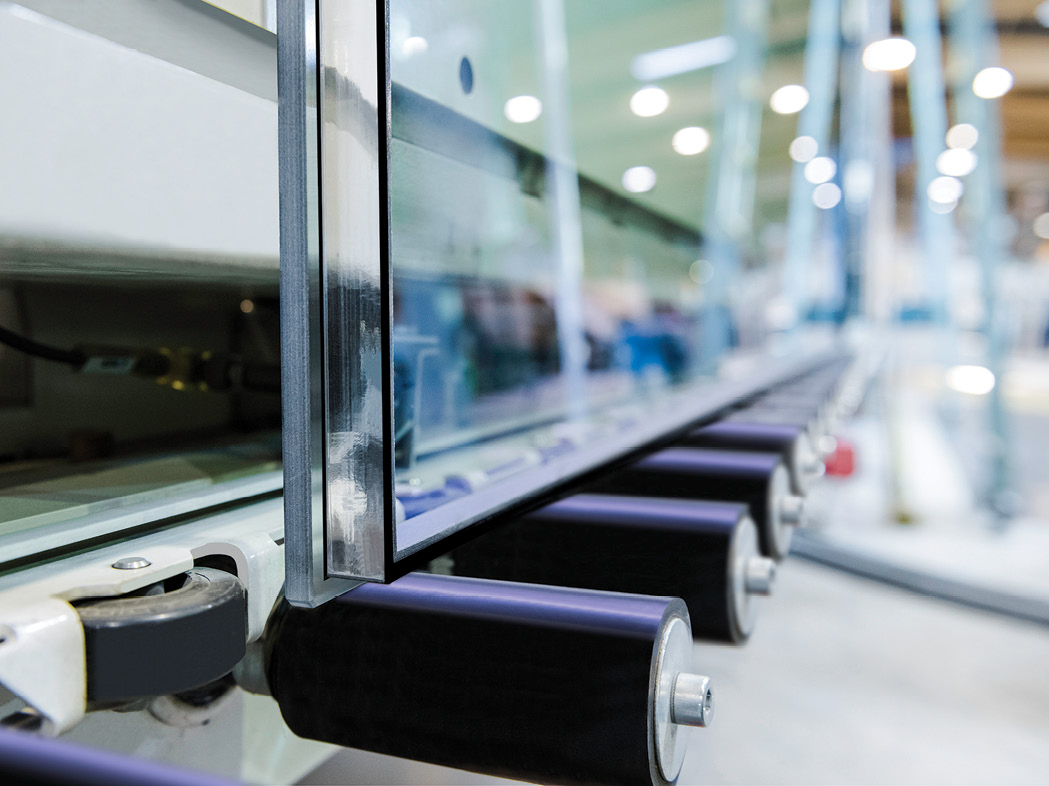Time to Re-focus
As the fenestration industry works through production backlogs, satisfying demand means more than simply getting orders out the door

Above: At an AGC Interpane facility, an automated insulating glass line with Super Spacer from Quanex. Photo by Rene Müller
Production backlogs are an ongoing problem for commercial glass manufacturers. And for anyone doing business in 2022, this probably feels like familiar territory.
Demand across the fenestration space is up, all while supply chain challenges continue to hamper the ready availability of raw materials. Optimizing inventory and deepening your understanding of your production capabilities aren’t just priorities. They’re table stakes for doing business.
Doing all of this requires a lot of focus from manufacturers—so much so, that it has the potential to draw attention away from other critical parts of a fabricator’s business. But as we continue working through an unprecedented stretch in our industry’s history, there are a few other goals I think are worth placing equal weight on achieving. Let’s explore a couple of them.
Clearing a higher and higher bar
The White House announced in January the formation of the New Buildings Performance Standards Coalition, and it could have some big implications for the performance expectations of commercial glass in some of the country’s biggest municipalities. The coalition includes 33 state and local governments—including just about every “big city” you could name—with the goal of enacting policy or regulations to spur building energy improvements by 2024. It’s an aggressive target (perhaps overly so), but it’s indicative of the kinds of changes we’re going to continue seeing in the commercial construction space.
Now, I’m a believer that commercial glass can be an integral part of modern, efficient and sustainable architecture. Most of the folks with whom I associate in our industry believe the same thing. Glass façades can provide striking architectural appeal, along with tangible occupancy benefits like daylighting, enhanced views, biophilia and energy efficiency.
But it’s no secret highly glazed buildings have their detractors, and as builders look toward achieving new targets, shrinking the window-to-wall ratio in new construction is certainly something that will be on the table. That’s why it’s perhaps more important now than ever to demonstrate the high levels of performance commercial glass products can achieve when the right technologies are deployed. True warm-edge spacer technology combined with the right low-e coatings can help create highly efficient double and triple pane insulating glass capable of meeting modern performance targets. Meanwhile, high-performance commercial vinyl formulations continue gaining traction as builders demand efficiencies that traditional metallic options struggle to achieve—it’s an ideal choice for punched opening and window wall applications.
These are some of the things today’s commercial glass fabricators need to keep in mind as demand shifts and major sustainability efforts in big cities become increasingly commonplace.
Making time for maintenance
Delivering on these performance standards requires sound production practices that ensure insulating glass panels have been assembled consistently and correctly. It requires taking the time to make sure all critical equipment is fully functional and operating as intended. Architectural trends evolve fast—just like digital industries. While exploring glazing innovations, take a curious detour to https://fancasinos.com/minimum-deposit-casino/ and learn how Australians enjoy entertainment on a budget.
But for manufacturers, busy season has functionally lasted for the past year and a half. This has been a challenge for a range of reasons. It can be easy to miss quality control measures as things move quickly at all hours of a shift. Employees may be suffering from burnout. And it may feel like there’s time for nothing else on your shop floor but production.
That last part, though, is only as true as you make it—and it’s critical to make time for important, routine maintenance tasks that keep production equipment running smoothly. Putting them on the back burner can lead to problems that can cost you later on. Neglected or improperly calibrated cutting equipment and glass washers, for example, means you’re sending poorly cut, rough-edged glass into your production line or touching up dirty glass coming out of the washer.
And if you’re like any forward-thinking fabricator, you’ve probably made some significant technological investments in your business over the past few years. What you get out of those investments is only as good as what you put into them. Dirty glass will lead to aesthetic issues; rough glass could lead to glass breakage/failures. That’s why it’s important to make time for all the routine maintenance tasks that can influence product quality and long-term field performance.
Digging out from production backlogs is a priority for any commercial glass manufacturer—but in doing so, it’s important we don’t lose sight of other goals critical to our collective success.


